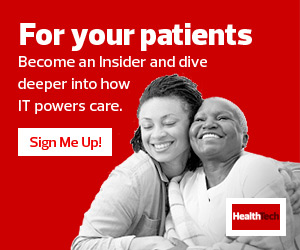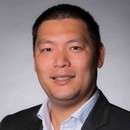The Rise of Cloud Journeys in Healthcare
At the summit, healthcare executives said that they were onboard with cloud migrations, but some had concerns about additional cost expenditure if they had already made major investments to an on-premises system. “So, how do you make that shift to cloud given the financial burden it may take to get to that flexibility and agility?” Chou asked.
Though cloud adoption is increasing in healthcare, he added, it’s still growing relatively slowly compared with other industries because many healthcare organizations are neither cloud-native nor have a cloud-first approach.
“There’s a lot of work that needs to happen to put some of the legacy, on-premises environments in the cloud, and a lot of working with the vendors,” Chou said. “Let's say you aspire to move everything to the cloud, but the top 15 percent of your portfolio is made and designed to be on-premises. When you move it to the cloud, there will be a lot of renegotiations and contracting that will need to be reevaluated and updated. That's the complicated piece.”
WATCH: How Providence enhances patient care with the cloud.
On a positive note, Chou said Software as a Service options are helping organizations adopt cloud technology. Subscription-based services are accelerating cloud migrations as well.
Another piece of the cloud discussion involves the workforce: What happens to an organization’s service engineers when it moves to the cloud? Chou said upskilling will be a critical issue, especially when deciding who is responsible for new training.
“Is that the responsibility of the employer? Or should the individual upskill and take initiative to learn what's needed for the next generation to support the future techs?”
Security Is Everyone's Responsibility in Healthcare
Security was also top of mind for summit attendees, Chou said, especially with regard to leadership responsibilities and reliance on managed services.
Ultimately, security responsibilities shouldn’t fall only on the shoulders of the CIO or CTO, he said; it must be organizationwide. Even when an organization has all the right technological tools, if employees haven’t been trained and still fall prey to phishing attempts, the entire health system is vulnerable.
“I think a lot of executives still struggle to figure out how to get to the table to make security an organizationwide initiative,” Chou said.
He likened security hygiene to clinical hygiene: Handwashing, for example, is an imperative throughout a hospital; security must be the same. It needs to be part of an organization’s DNA.
EXPLORE: Why healthcare cybersecurity is a team effort.
More organizations are coming to terms with the time, effort and investment it takes to build a robust security program — it doesn’t just happen overnight. With so many best-of-breed solutions out there, where are areas in which organizations can consolidate? Is “good enough” for a solution actually good enough? Where can organizations form key security partnerships?
Some healthcare CISOs are starting to understand that it might not make sense to wait for a fully staffed in-house security team and that managed services can help.
“Given the prevalence of security concerns, to be safe, you have to be able to utilize major partners rather than try and build it out when you just can’t do that,” Chou said.
Healthcare’s Evolution Goes Beyond Digital Transformation
As a buzzword, digital transformation doesn’t truly capture the change that’s happening in healthcare, according to Chou — it’s more like operational transformation, a redesigning of processes.
“That’s where the forward-thinking CIOs and digital officers can influence an organization to change its operating model,” Chou said. “The ones that can do that can drive the transformation and use all these tools. But you can’t use the tools if you don't design or redesign the operating model.”
For example, healthcare supply chain management is an area rife with opportunities for operational transformation, Chou said, but many organizations likely haven’t changed how they’ve operated for at least the past decade. And if they haven’t changed their operations, it won’t make sense to slap the latest and greatest technologies on top.











